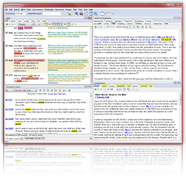Montorsoli, Fragiovann Angelo
Montorsoli, Fragiovann' Angelo a celebrated Italian sculptor, largely engaged on sacred and ecclesiastical subjects, was born about the beginning of the 16th century at Montorsoli, near Florence. His first instruction in art he received from Andrea de Fiesole, with whom he lived three years. He then found employment at Rome, at Perugia, and at Volterra. He was next employed by Michael Angelo on the church of San Lorenzo at Florence, and gained the admiration and lasting friendship of the great Florentine. In 1527 Montorsoli had a strong disposition to turn, as it appeared to him, to the only life in which peace was to be obtained; but after trying in vain several convents, he fixed in 1530 upon the brotherhood of the Nunziata at Florence, and became a friar of the Order Dei Servi della Nunziata. Shortly after he had taken up his abode in this convent, having been recommended to the pope by Michael Angelo, he was called to Rome by Clement VII to restore several ancient monuments, much to the dissatisfaction of his brothers of the Nunziata. When the tasks assigned him by the pope were finished, he returned to Florence with Michael Angelo to complete the statues and other sculptures of the sacristy and library of San Lorenzo. After the death of Clement, Montorsoli again joined Michael Angelo at Rome, and assisted him in the works of the monument of Julius II; but while engaged on this work he was invited by cardinal Turnone, and advised by Michael Angelo to go with the cardinal to Paris. Owing, however, to difficulties with the treasury and servants of the French court, Montorsoli left Paris and returned to Florence. After completing there several works, he went by Rome to Naples, and there constructed the tomb of Jacopo Sanazzaro. He next went to Genoa, and ornamented the church of San Matteo there, besides many other works, and upon their completion returned to Michael Angelo at Rome; but departed again soon afterwards, in 1547, for Messina, where he was employed to make a grand fountain for the place in front of the cathedral, and designed the church of San Lorenzo, etc. In 1557, by a decree of pope Paul IV, all religious persons, or all who had taken holy orders and were living at large in the world without respect to their religious character, were ordered to return to their convents and reassume their religious habits; and Montorsoli was accordingly obliged to leave many works unfinished, which he intrusted to his pupil Martino, and he returned to his convent at Florence. He was, however, shortly afterwards called to Bologna to construct there the high altar of the church of his own order, Dei Servi, which he completed with great magnificence in twenty-eight months. He returned to Florence in 1561, and being rich he built a common sepulchre for artists in the chapter-house of the convent of the Nunziata, with the requisite endowment for regular masses at appointed times, and gave the whole sepulchre, chapter, and chapel to the then almost decayed society of St. Luke, or company of painters, etc., which, upon the completion of the sepulchre, was at a solemn feast celebrated by forty-eight of the principal artists of Florence, re-established by the consent and authority of the duke Cosmo I upon a firmer and permanent basis; and the society still subsists as the Academy of Florence, though since that time it has been considerably enriched and endowed by successive dukes of Tuscany. Montorsoli died, says Vasari, on the last day of August, 1563. See Cicognara, Storia della Scultura; Valery, Voyages historiques et litteraires en Italie; Spooner, Biographical Hist. of the Fine Arts, s.v.; English Cyclop. s.v.

